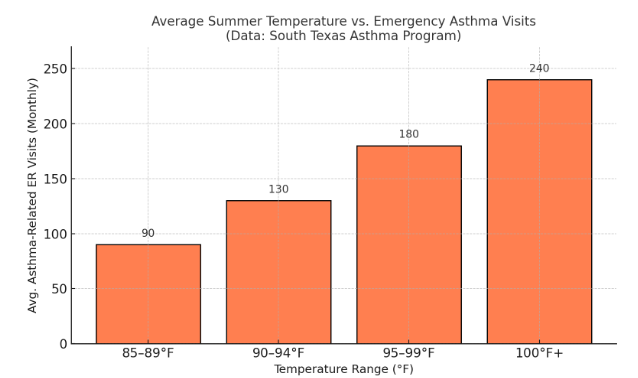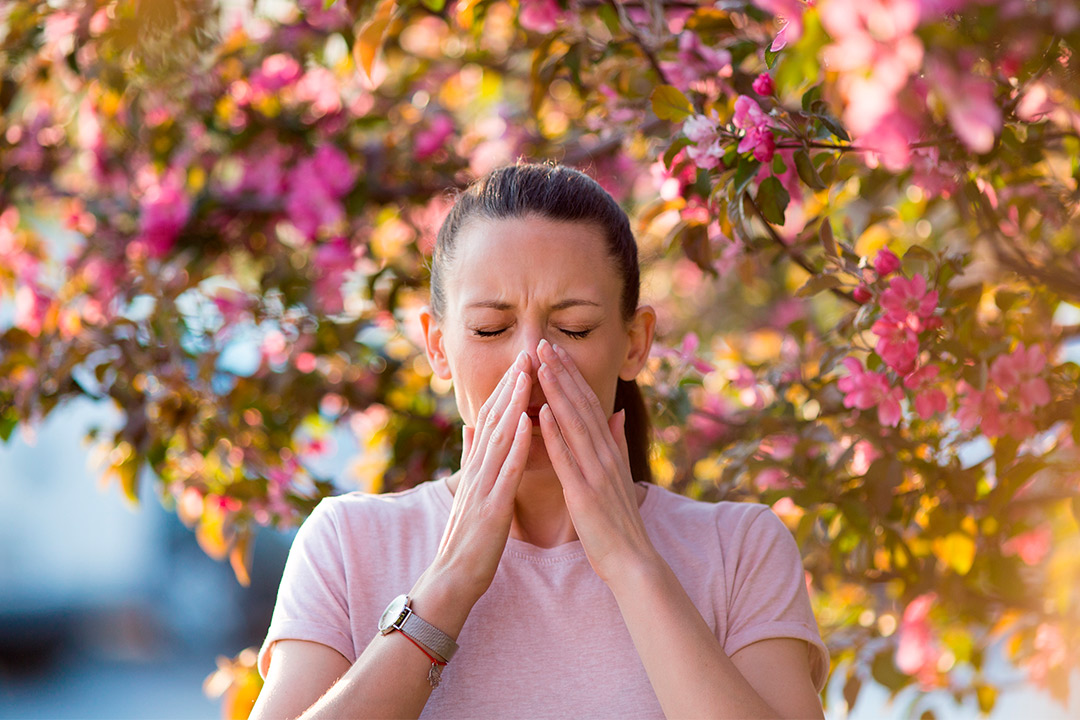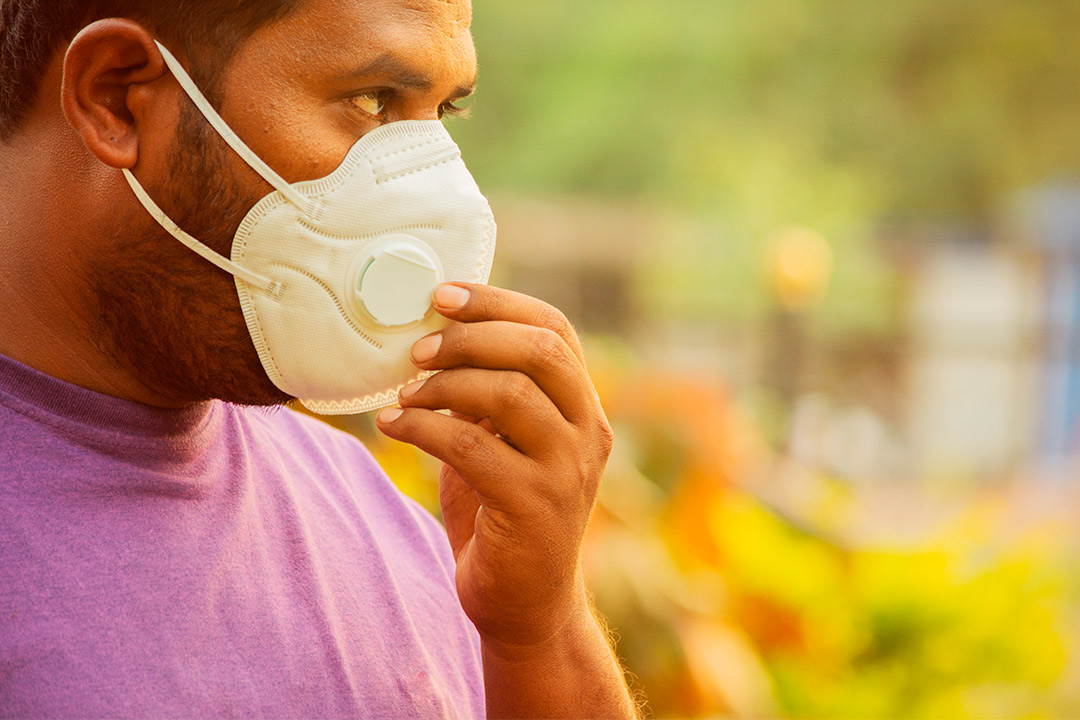Understanding Asthma Triggers in South Texas Summers
South Texas summers bring soaring temperatures, intense humidity, and a mix of environmental allergens that can severely affect individuals with asthma. With over 28 million Americans living with asthma, understanding local triggers becomes essential for managing symptoms, especially in a region where climate and geography magnify risks.
Understanding How South Texas Weather and Air Quality Impact Breathing Health
The climate in South Texas presents multiple environmental threats for individuals with asthma, especially during summer. With its subtropical weather pattern, the region experiences prolonged periods of heat, humidity, and poor air quality. All of these can provoke or worsen asthma symptoms. These factors, when combined, create a hostile respiratory environment, particularly for vulnerable groups like children, the elderly, and underserved communities.
Why South Texas Summers Are High Risk

Summer in South Texas brings serious health challenges for people with asthma, making careful management essential. The seasonal climate intensifies existing respiratory conditions and creates new risks for flare-ups and emergencies. The subtropical climate creates a perfect storm for asthma sufferers:
- High temperatures irritate sensitive airways and increase water loss, leading to dehydration.
- Humidity above 50% thickens the air, making breathing physically more difficult, especially for children, whose smaller airways respond more drastically.
- Airborne pollutants and allergens rise in concentration, inflaming lungs that are already vulnerable.
Key Environmental Triggers
Each major environmental factor in South Texas plays a specific role in triggering asthma symptoms. Understanding them individually helps in creating a more targeted prevention and treatment plan.
- Heat: Prolonged exposure to high temperatures can cause the airways to become reactive, triggering inflammation and bronchoconstriction that make breathing difficult.
- Humidity: Moist air not only feels heavier but also encourages mold and dust mite growth indoors. These are two of the most common indoor asthma triggers.
- Pollen: Due to South Texas’ long growing season, pollen from grasses, trees, and weeds remains in the air for months, significantly increasing exposure risk.
- Ozone Pollution: Created by a reaction between sunlight and emissions, ozone levels peak during hot afternoons and are linked to reduced lung function and increased asthma hospitalizations.
These triggers rarely occur in isolation. Instead, they overlap and amplify their individual effects and leading to disproportionately higher asthma-related incidents across South Texas.
Average Summer Temperature vs. Emergency Asthma Visits
As temperatures increase, emergency visits for asthma rise sharply, demonstrating a direct relationship between heat and respiratory distress.

How Nature and Pollution Amplify Asthma Risks in South Texas
Beyond heat and humidity, seasonal allergens and poor air quality are two major contributors to asthma flare-ups during South Texas summers. The region’s unique geography and extended growing season allow allergens like pollen and mold to thrive for longer periods. Simultaneously, urban and industrial activity drives up ozone and particulate pollution, compounding respiratory strain. Understanding when and where these triggers peak is essential for asthma control and prevention.
Pollen Proliferation in South Texas

The long growing seasons and plant diversity in South Texas make it one of the most allergen-rich areas in the country. Residents are exposed to a wide variety of pollens for extended periods throughout the year:
- Tree pollen (spring)
- Grass pollen (summer)
- Weed pollen (late summer and fall)
Levels often exceed 1,000 grains per cubic meter, placing them in the “very high” range according to allergy specialists. This sustained exposure can lead to chronic inflammation of the airways, especially in those with allergic asthma.
Common Pollens by Season
Pollen levels in South Texas remain elevated across all seasons due to the region’s diverse plant life and long growing periods
Common Pollens by Season
These common plants release large quantities of airborne pollen, which can trigger asthma symptoms even without visible allergy signs.
|
Season |
Major Pollen Types | Typical Concentration (grains/m3) |
| Spring | Oak, Ash, Elm | 800–1,200 |
| Summer | Bermuda Grass | 600–900 |
| Fall | Ragweed, Pigweed | 1,000–1,300 |
High and prolonged pollen levels can trigger asthma even when traditional allergy symptoms aren’t present.
Urban Air Pollution Worsens Symptoms

During summer, ozone levels spike between 10 AM and 4 PM, compounding the effects of allergens and heat. Hispanic communities along the border experience disproportionately higher rates of hospitalization due to these overlapping risks.
Ozone Level Peaks and Asthma Incidents
The correlation between ozone surges and emergency visits underscores the need for caution during peak daylight hours. This graph shows how ozone levels and asthma-related ER visits both peak between 12 PM and 3 PM. This clear overlap highlights the need to limit outdoor activity during these hours to reduce asthma risks.

Cumulative Risk Factors in South Texas Summers
While each factor alone is significant, the combination is what makes South Texas summers particularly dangerous for asthma sufferers.
| Trigger Type | Individual Risk | Combined Risk (with other triggers) |
| Heat | Moderate | High |
| Humidity | Moderate | High |
| Pollen | High | Very High |
| Ozone Pollution | High | Very High |
Summer Preparedness for Asthma Patients
Being proactive is the best defense. Begin with these daily habits:
- Monitor Air Quality: Use apps and check the Texas Commission on Environmental Quality reports.
- Time Your Activities: Mornings or post-7 PM are safest for outdoor exposure.
- Stay Indoors During Peak Hours: Between 2–5 PM, heat and ozone levels are at their worst.
Creating an Asthma-Safe Home
A clean and climate-controlled home reduces indoor trigger exposure significantly.
| Prevention Method | Benefit |
| HEPA Air Filters | Reduce allergens indoors |
| Maintain 30–50% humidity | Discourages mold growth |
| Wash bedding weekly in hot water | Eliminates dust mites |
| Clean A/C filters monthly | Improves air quality |
Essential Emergency Kit for Summer
Prepare a portable asthma kit with as having these items on-hand can help prevent mild symptoms from escalating.
- Rescue inhaler and spacer
- Maintenance medications
- Written asthma action plan
- Reusable water bottle (hydration keeps airways moist)
- Mask or scarf (for pollution/pollen filtering)
Outdoor Activities: Safe Practices for Asthma Sufferers
Timing and Awareness Are Key
South Texas summers shouldn’t keep you indoors, but they require caution. Follow these tips:
- Choose mornings or late evenings for walks, runs, or sports.
- Pre-treat with inhalers if prescribed (15–20 minutes before activity).
- Watch for early symptoms: coughing, wheezing, tight chest.
Warning Signs Requiring Action
Recognizing and responding to severe symptoms quickly can save lives.
| Symptom | Action Needed |
| Retractions (visible pulling at ribs) | Seek emergency care immediately |
| Shortness of breath while resting | Use rescue inhaler, seek help |
| Blue lips or nails | Call 911 |
Shower & Change Clothes After Outdoor Exposure
Pollen and mold can stick to clothes, hair, and skin. A simple routine of showering and changing after coming indoors reduces exposure dramatically.
Long-Term Asthma Management

Develop a Written Asthma Action Plan
Work with an experienced doctor to personalize a plan that includes:
- Daily medication use
- Instructions for mild to severe symptoms
- Emergency contacts
- Steps for increasing symptoms during summer
Educate Your Support Network
Make sure caregivers, camp staff, or teachers are trained in asthma response. Community asthma programs have been shown to reduce emergency visits by up to 40% in high-risk populations.
Key Elements of a Successful Asthma Plan
A well-structured asthma plan helps individuals and caregivers respond quickly and effectively during symptom flare-ups for a faster, more effective response in emergencies.
| Plan Component | Purpose |
| Medication schedule | Prevents chronic symptoms |
| Emergency step-by-step | Clarifies next actions under stress |
| Trigger identification | Helps avoid specific irritants |
| Caregiver instructions | Ensures consistency in support |
Partnering with Expert Medical Support in South Texas
If you’re navigating asthma in South Texas, working with a care provider who understands local triggers is essential. Clinics like Kuye Medical Group specialize in asthma diagnosis, trigger testing, and personalized care planning tailored to your lifestyle and location.
Their services include:
- Pulmonary function testing
- Allergy testing and immunotherapy
- Medication management
- Environmental trigger education
Take Control of Your Summer Breathing Health
Managing asthma in South Texas is challenging but not impossible. With the right education, preparation, and healthcare support, individuals can stay safe and active, even through intense summer heat.
At Kuye Medical Group, we offer comprehensive asthma and allergy services, including diagnostic testing, personalized treatment plans, and environmental trigger management, to help you breathe easier and live better. Contact Kuye Medical Group to create your personalized asthma management plan. Our expert team is ready to help you take control, so asthma doesn’t control your life.





